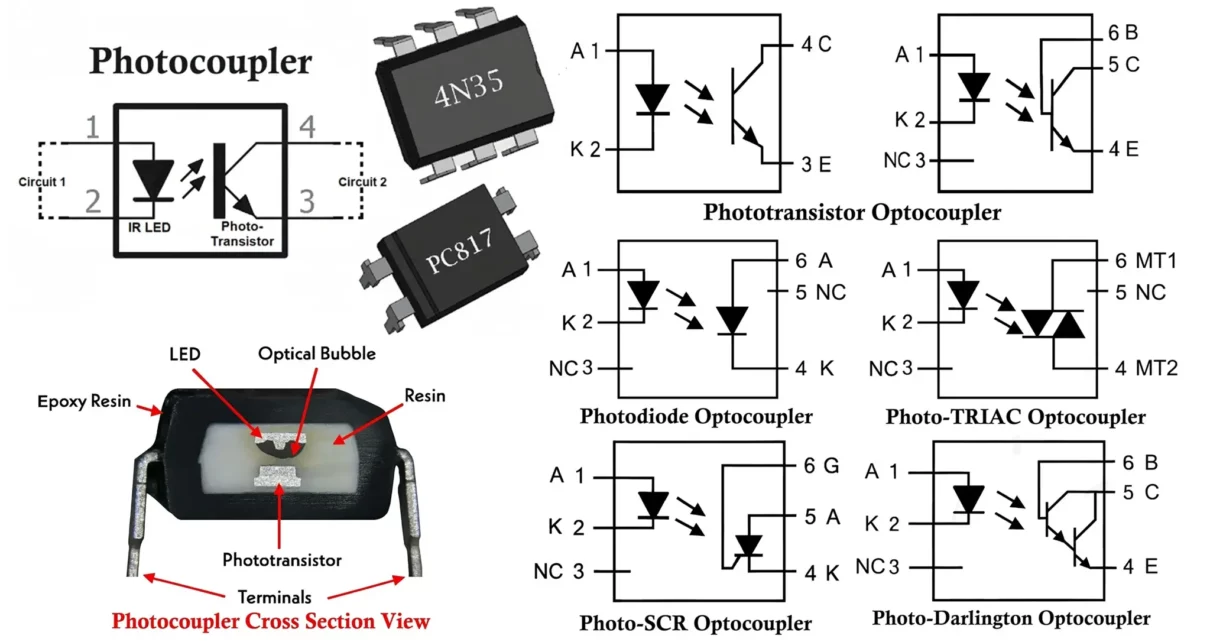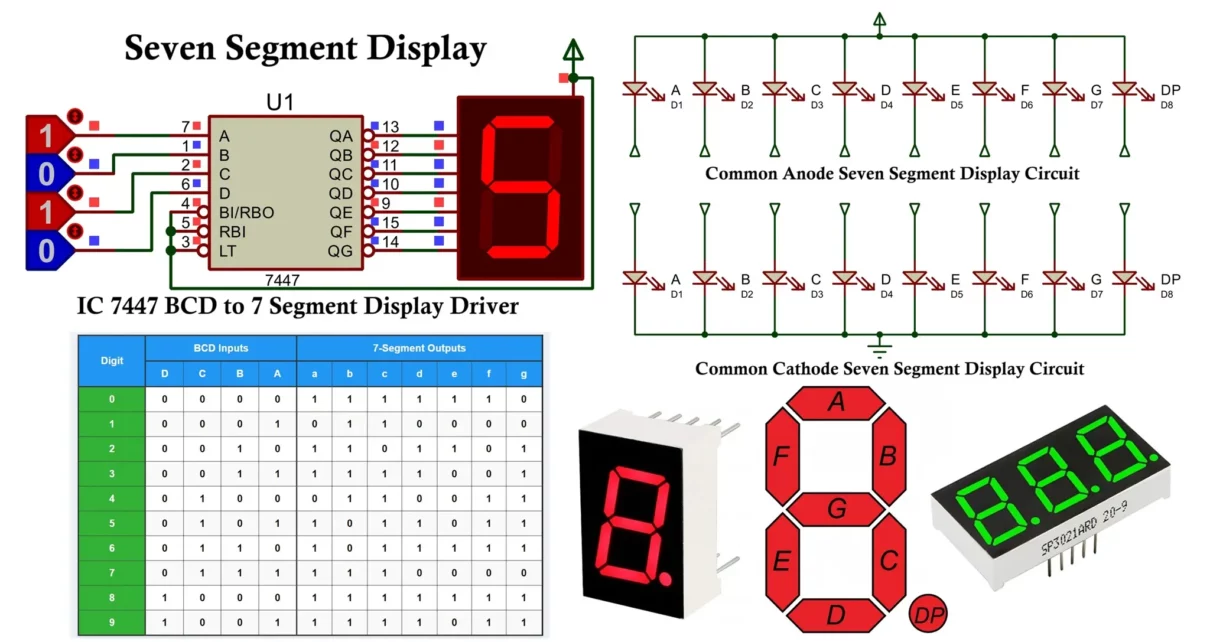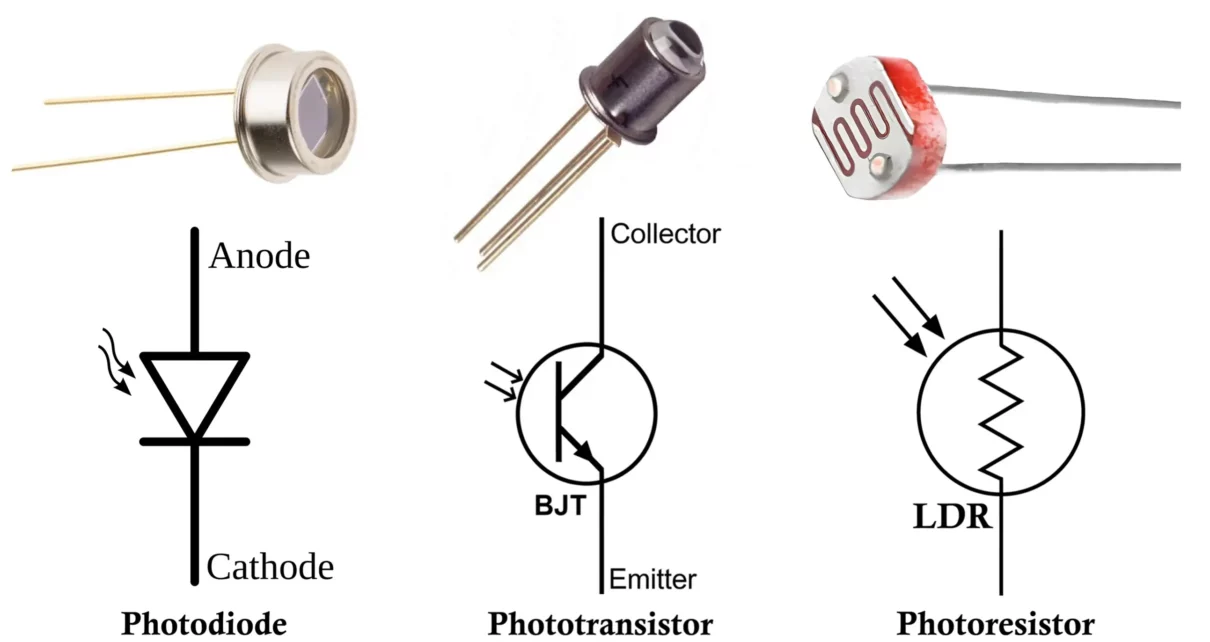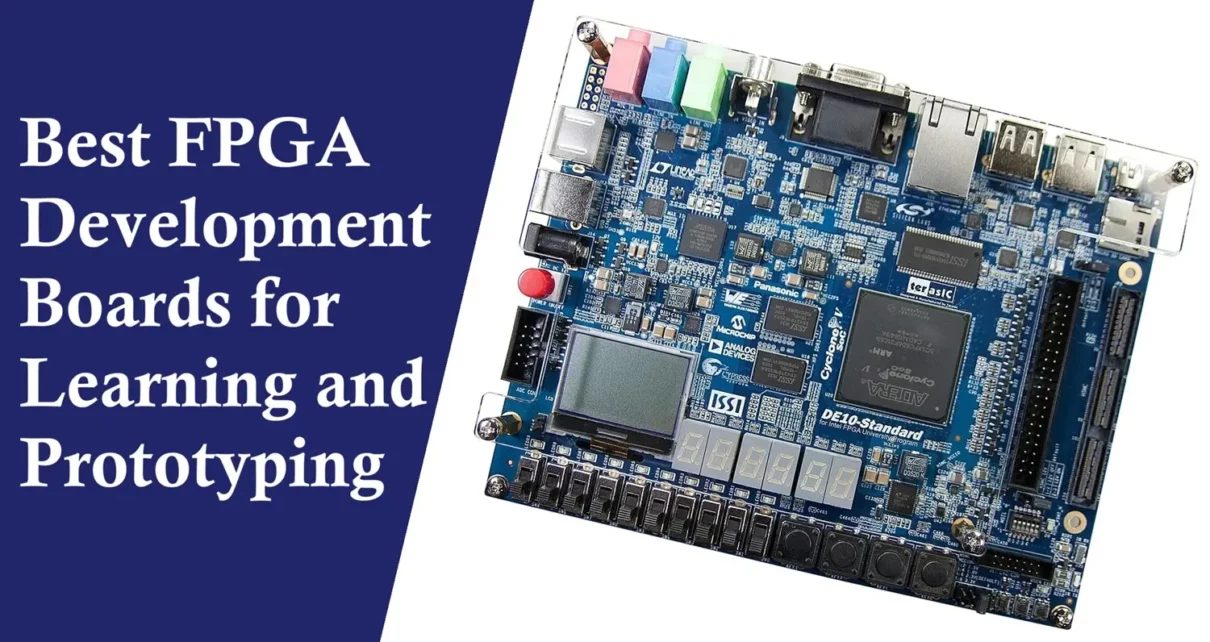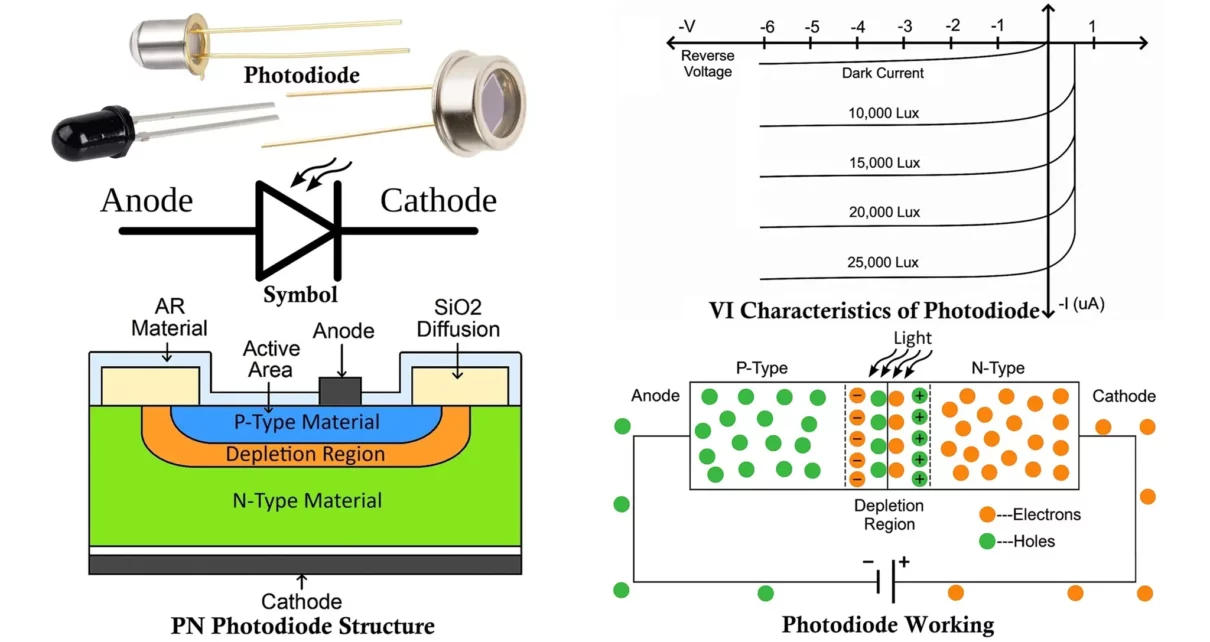In modern electronics, signal isolation between different parts of a circuit is crucial for protection, noise reduction, and system stability. Optocouplers, also known as optoisolators, play a vital role in achieving this electrical isolation while allowing signal transmission. This article provides a thorough exploration of optocouplers (Optoisolator / Photocoupler), including their construction, working principles, advantages, […]
Electronics tutorial
Here are the basic electronics tutorial circuits for beginners. You can find here tutorials on operational amplifiers (opamp), transistor, MOSFETs, 555 timer IC, audio amplifiers and many more.
Seven Segment Display: Types, Working, Pin Diagram & Applications
We see numbers displayed on many electronic devices around us, like digital clocks, calculators, microwave ovens, and scoreboards. But have you ever wondered how these numbers appear on the screen? One of the most common ways to show numbers in electronic devices is by using a Seven Segment Display. It is a simple electronic component […]
Difference Between Photodiode, Phototransistor and Photoresistor
In the field of electronics and optoelectronics, light-sensitive devices play a crucial role in converting light signals into electrical signals. Among the most widely used light sensors are the Photodiode, Phototransistor, and Photoresistor (also known as Light Dependent Resistor or LDR). Though they all respond to light, their construction, working principles, advantages, disadvantages, and applications […]
Best FPGA Development Boards for Learning and Prototyping
Field-Programmable Gate Arrays (FPGAs) might sound intimidating at first, but they’re actually one of the most exciting ways to learn digital design. Unlike microcontrollers (like Arduino or STM32) that run instructions on fixed hardware, FPGAs let you design your own hardware. That means you can create custom processors, signal processors, robotics controllers, or even video […]
Photodiode – Symbol, Construction, Working, Types and Applications
Photodiode is a crucial component in modern electronics, enabling devices to detect and respond to light. From remote controls and light meters to solar panels and advanced optical communication systems, photodiodes play a silent but powerful role in shaping how we interact with technology. In this article, we’ll explore everything you need to know about […]
Ceramic vs Electrolytic Capacitor: Key Differences and Applications
Introduction: In electronic circuit design or repair, selecting the right capacitor is critical to performance and reliability. Ceramic and electrolytic capacitors are two of the most commonly used capacitor types, each suited for distinct applications due to their differing structures and electrical characteristics. Understanding their key differences – including capacitance range, frequency response, polarity requirements, […]
